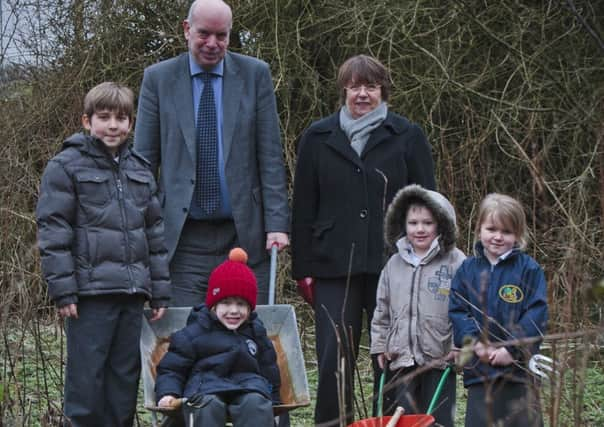Gisburn children grown own food with £2,000 grant


Gisburn Primary School has received the cash to set up a community food garden.
The funds will be used for fencing, the establishment of plots and paths, a shed, wormery, composting bin and polytunnels.
Advertisement
Hide AdAdvertisement
Hide AdMore than 20 Ribble Valley primary and secondary schools are to receive between £2,000 and £5,000 each from the borough council for the establishment of food gardens.
Community food growing has seen a resurgence of interest in recent years and there is an extensive waiting list for the borough’s 250 allotments.
Just 30 minutes of gardening can burn as many calories as aerobic exercise, while allotments provide a healthier and more nutritious diet.
Gardening has also been shown to improve mental health and develop life skills, such as deferred gratification and reward for effort, for youngsters . It can also provide a sense of achievement, satisfaction and pride.
Advertisement
Hide AdAdvertisement
Hide AdThe Community Food Growing Scheme is being co-ordinated by the council’s partnership officer, David Ingham, who said: “Educating children on the importance of healthy food and environmental sustainability is now considered an important role for local authorities and schools.
“We have identified primary and secondary schools in Ribble Valley that want to join the scheme, and are in a position to support them in finding, funding and building their own food gardens.”
Gisburn Primary School teacher Jackie Clements is very enthusiastic about the scheme and noted that it wasn’t the first time that the school had gone down the “grow your own” path. Shesaid: “During the war, the school grew all its own food, and with the help of the community we hope to restore the garden and grow a variety of fruit and vegetables for the children to eat.”
In the late 1940s, there were 935 allotments in Clitheroe. Popularity was high due to the Second World War and the national Dig for Victory campaign, which encouraged people to grow their own food. Every available plot of land, from flower gardens to public parks and even roadside verges was used to grow food for the war effort.
Advertisement
Hide AdAdvertisement
Hide AdIn the 1980s and ’90s, plots were sold off due to lack of demand, but interest in allotments has rocketed recently.Gardeners can save up to £950 a year by growing their own produce, as well as reducing their carbon footprint.